Breakfast is one of the best ways to start the day, but when you’re on a gluten-free diet, your options can feel limited. If you’ve missed the flaky goodness of crescent rolls in your mornings, you’re in for a treat. This guide introduces you to the world of gluten-free crescent roll breakfast recipes, allowing you to enjoy comforting and satisfying breakfasts that are both delicious and gluten-free.
Whether you’re new to gluten-free baking or an experienced pro, this guide will walk you through creating and customizing gluten-free crescent rolls for breakfast. Let’s bring some delicious nostalgia back to your mornings!
Table of Contents
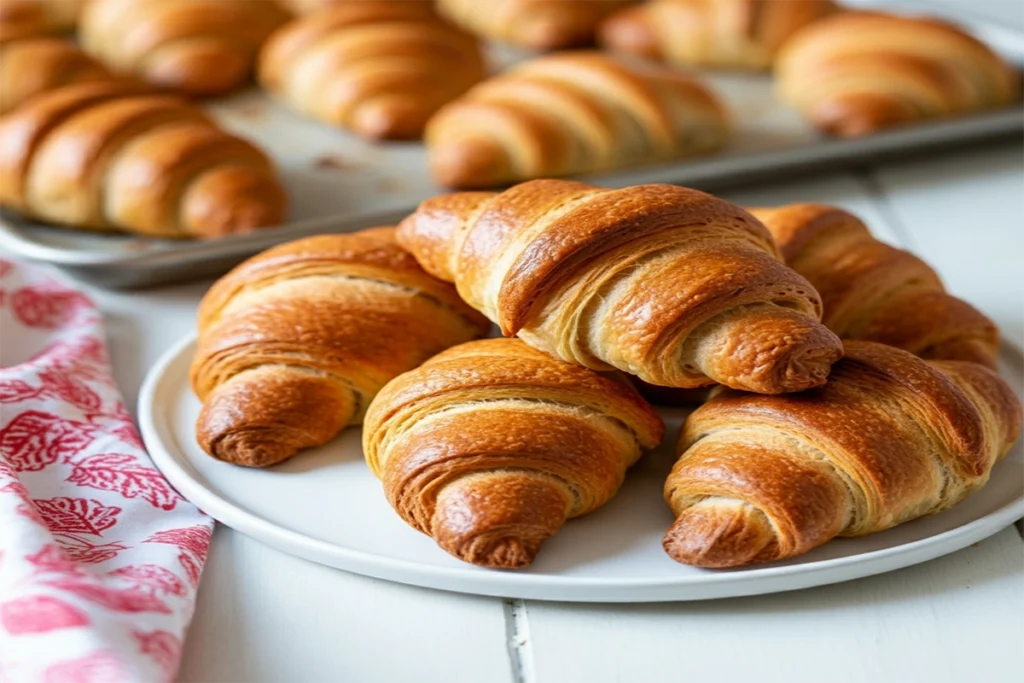
Why You’ll Love This Recipe
This gluten-free crescent roll recipe combines simplicity with delicious flavor, making it perfect for busy mornings or special occasions.
You’ll love how versatile these rolls are—they can be enjoyed plain, stuffed with savory fillings, or turned into satisfying breakfast sandwiches. Plus, they offer the same buttery, flaky texture as traditional crescent rolls without the gluten, making them a delightful treat for anyone following a gluten-free diet.
Quick to prepare and customizable, these rolls make mornings feel extra cozy and indulgent!

Why Gluten-Free Crescent Rolls Make the Perfect Breakfast
Gluten-free diets are more than a trend; for many people, they’re a necessity. Whether you’re gluten-intolerant, have celiac disease, or simply feel better without gluten, creating familiar favorites like crescent rolls can be a challenge. But the benefits are rewarding: gluten-free crescent rolls allow you to enjoy a classic breakfast without the gluten.
Many who switch to gluten-free eating report increased energy, reduced inflammation, and improved digestion. Plus, making crescent rolls at home lets you control ingredients, ensuring a clean, health-conscious option. And while store-bought gluten-free options exist, homemade crescent rolls are fresher, customizable, and more cost-effective.
Key Ingredients for Gluten-Free Crescent Rolls
Making gluten-free crescent rolls at home requires special ingredients, especially flours that mimic the structure of traditional wheat flour. Here’s what you’ll need to achieve that light, airy texture and buttery taste:
| Ingredient | Purpose |
|---|---|
| Gluten-Free Flour | Forms the base; look for high-quality blends with xanthan gum or guar gum. |
| Baking Powder | Helps the dough rise and gives a light texture. |
| Salt | Adds flavor and balances sweetness. |
| Butter (or alternative) | Adds richness and helps create a flaky texture. |
| Milk (or dairy-free alternative) | Adds moisture and tenderness. |
| Sugar | Provides slight sweetness; optional. |
For the flour blend, you can use ready-made gluten-free all-purpose blends or create your own mix with rice flour, potato starch, and tapioca flour. The secret to achieving the ideal texture is in finding a balanced blend that adds elasticity and softness.

Step-by-Step Recipe: Making Gluten-Free Crescent Rolls from Scratch
Making gluten-free crescent rolls from scratch requires some technique, but don’t worry; we’ve broken it down into simple steps.
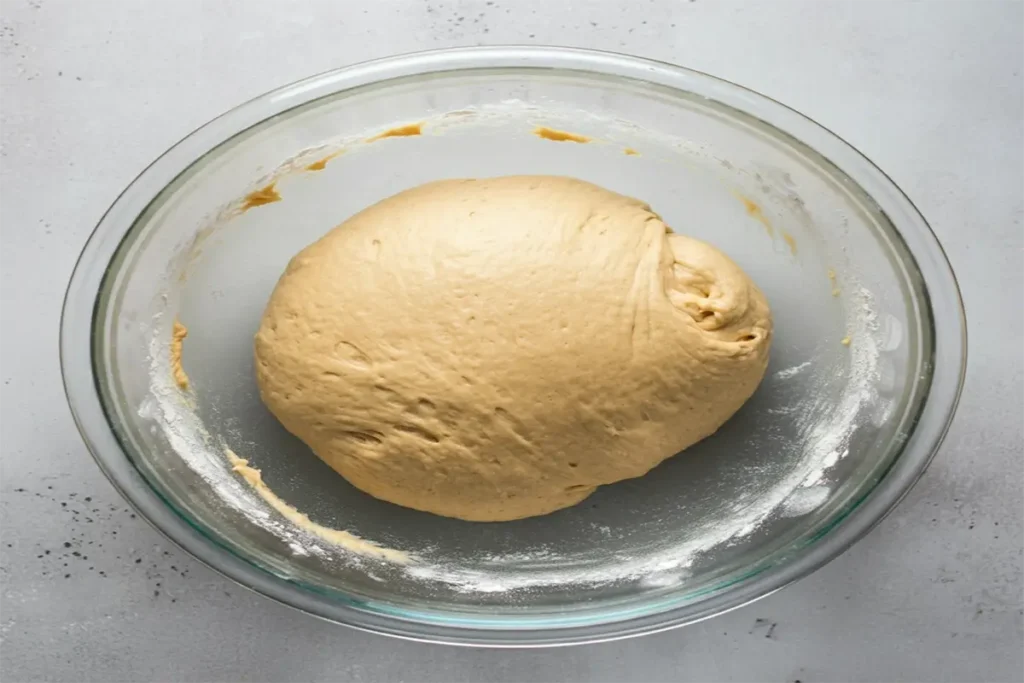
Preparing the Dough
- Mix Dry Ingredients: Combine gluten-free flour, baking powder, salt, and sugar in a mixing bowl. Stir until well-blended.
- Cut in the Butter: Using a pastry cutter or your fingers, cut the butter into the flour mixture until it resembles coarse crumbs. This step creates flaky layers.
- Add Milk: Slowly add milk to the flour mixture, stirring until a dough forms. The dough should be slightly sticky but manageable. Add more flour if needed.
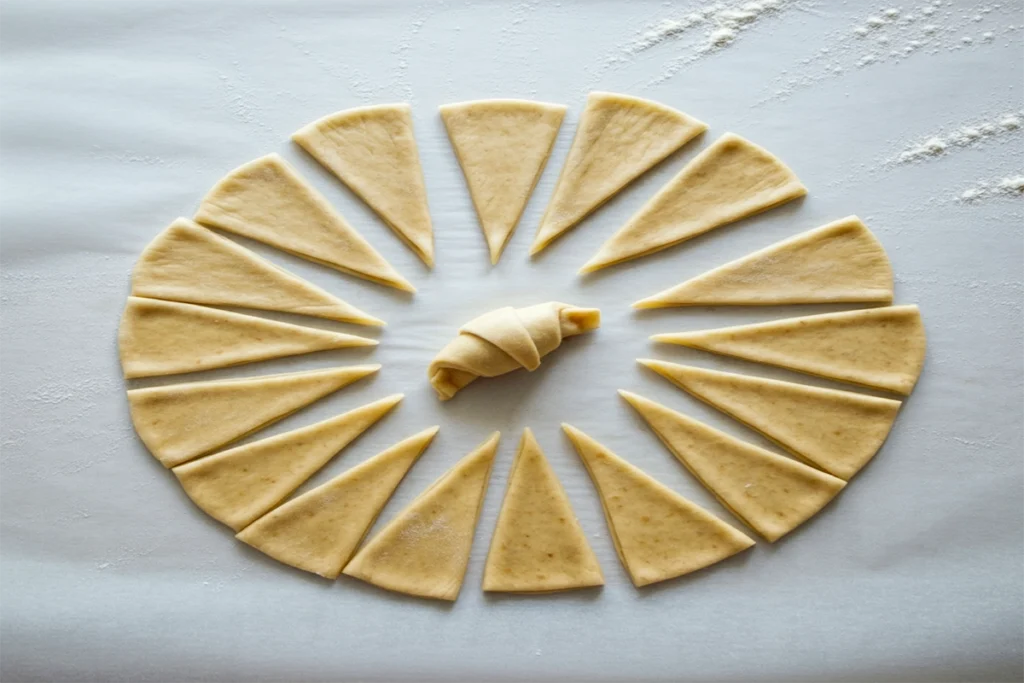
Rolling Techniques
- Roll Out the Dough: Transfer the dough onto a lightly floured surface. Roll it out into a rectangle about ¼ inch thick.
- Shape into Triangles: Cut the rectangle into smaller triangles.
- Roll into Crescents: Starting at the wide end of each triangle, roll toward the pointed end. Place each roll on a baking sheet.
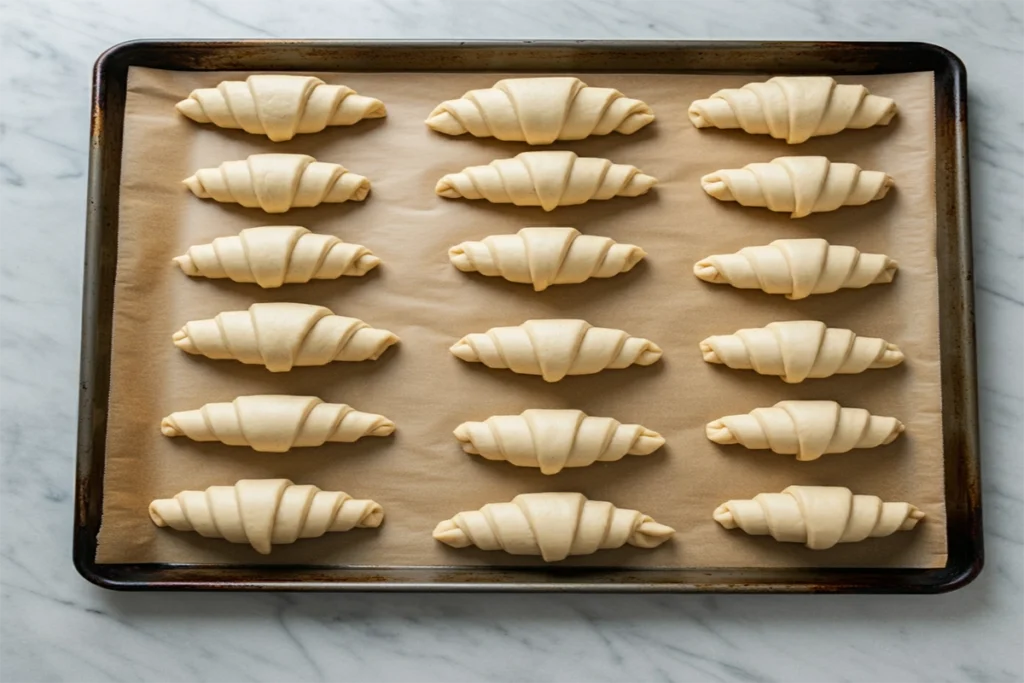
Proof Until Doubled in Size
Means allowing the dough to rest and rise until it roughly doubles its original volume. This step is essential for gluten-free crescent rolls, as it gives the dough time to develop air pockets, resulting in a light, airy texture.
To proof the dough, place it in a warm, draft-free area, covered with a clean cloth to retain moisture.
Depending on room temperature, this process can take anywhere from 30 minutes to an hour. Proper proofing is key to achieving fluffy, well-risen rolls.
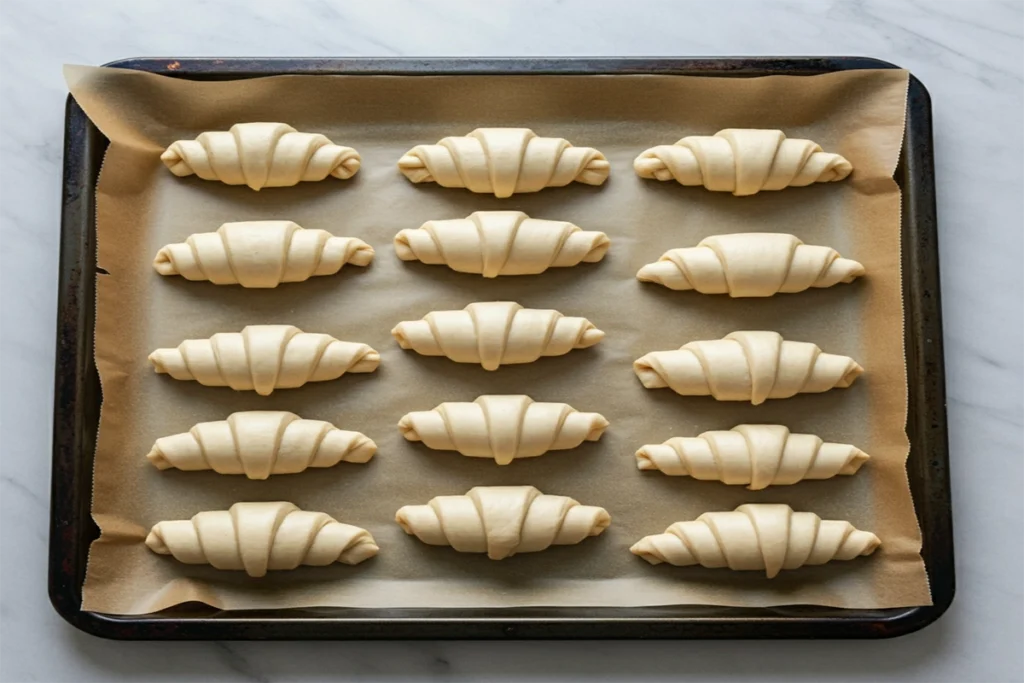
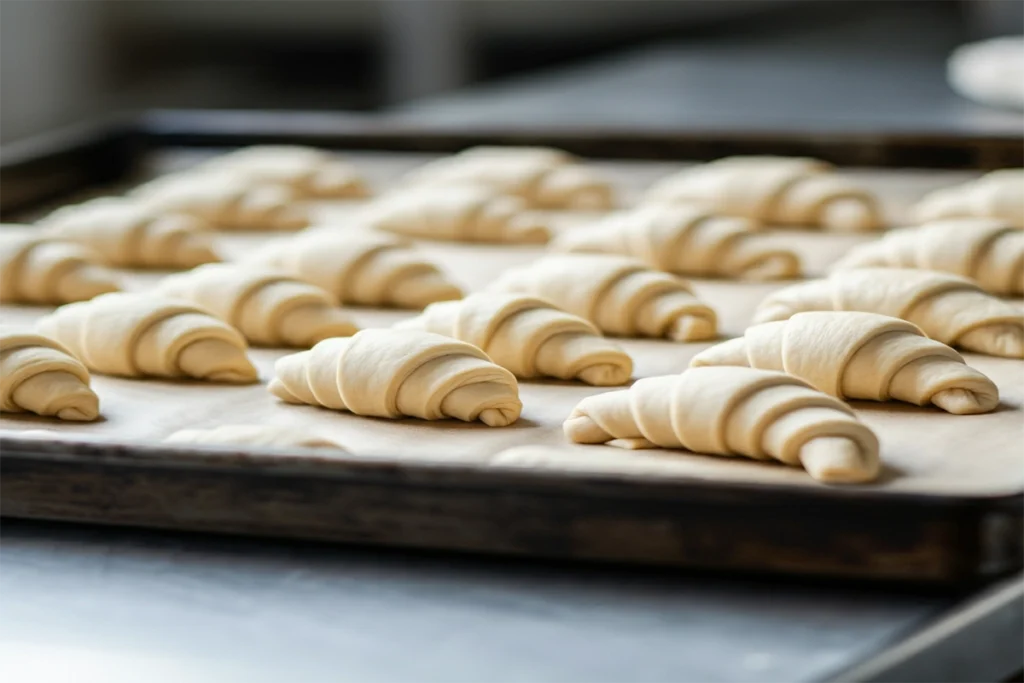
Why do we brush the crescent roll with egg yolk?
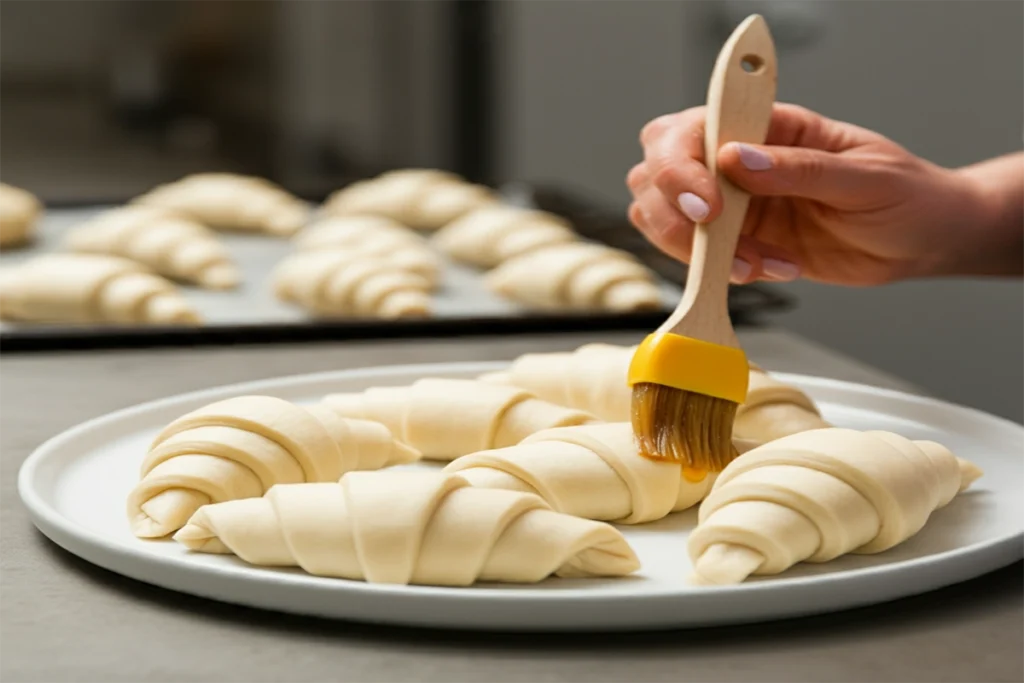
Brushing the tops of crescent rolls with egg yolk before baking gives them a beautiful golden-brown color and a glossy finish, making them look extra appetizing. The fat content in the yolk helps promote a rich color as it caramelizes in the oven. Additionally, it helps the rolls develop a slightly crisp exterior while remaining soft inside. This simple step enhances the overall presentation and adds a touch of flavor to each roll, making them even more irresistible.
Baking the Crescent Rolls
- Preheat the Oven: Set the oven to 375°F (190°C).
- Bake: Bake for 12-15 minutes or until the rolls are golden brown.
- Cool and Serve: Let the crescent rolls cool slightly before serving.
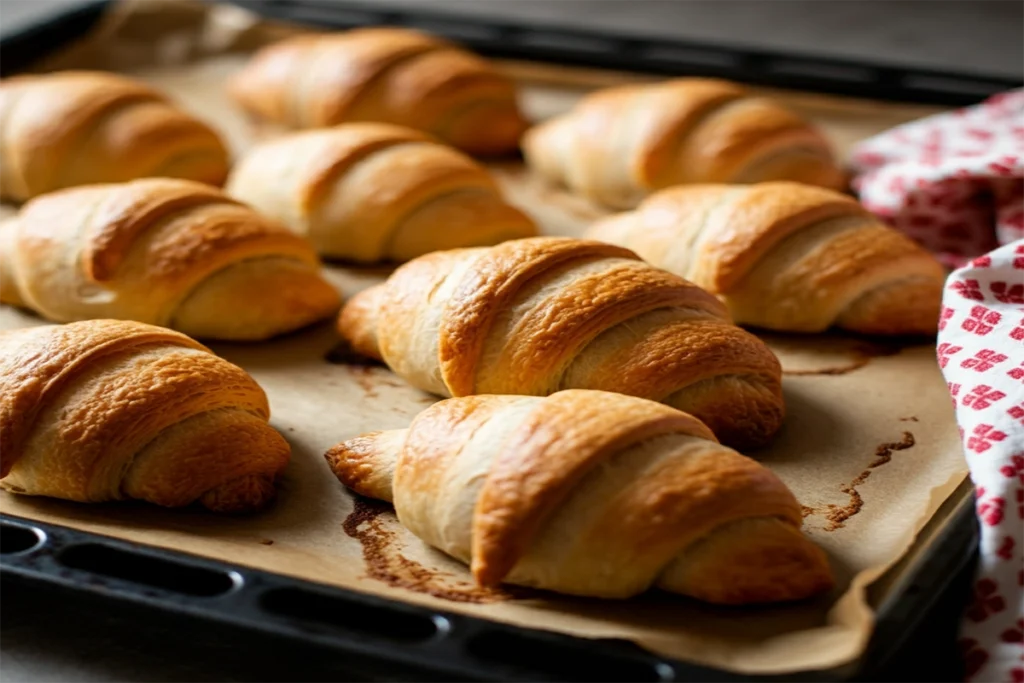
Breakfast Variations to Try with Gluten-Free Crescent Rolls
Gluten-free crescent rolls offer endless possibilities for breakfast creativity. Here are some ideas to add variety to your mornings:
- Breakfast Sandwiches: Slice the baked crescent roll in half and fill with scrambled eggs, cheese, and bacon or avocado.
- Stuffed Crescent Rolls: Before rolling, add fillings like cream cheese, spinach, or shredded cheese to each triangle.
- Crescent Roll Breakfast Casserole: Layer crescent rolls with eggs, vegetables, and cheese in a baking dish. Bake until set for a filling, savory breakfast.
These variations make it easy to adapt the basic recipe to your taste preferences, adding protein, vegetables, or dairy-free options as needed.
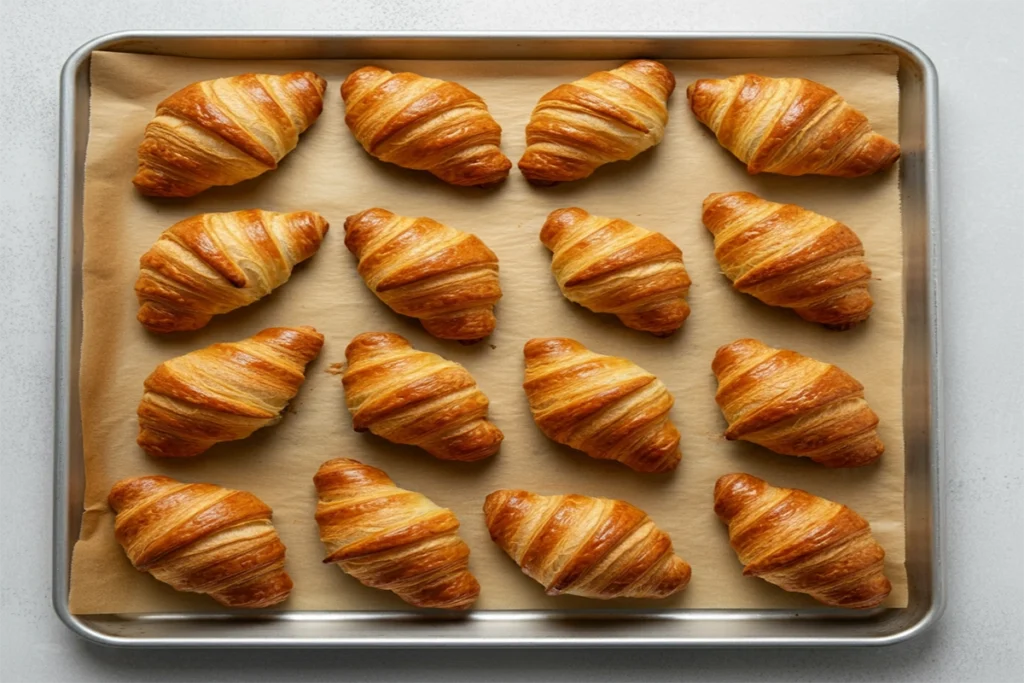
Tips for Storing and Reheating Gluten-Free Crescent Rolls
Because gluten-free baked goods can dry out quickly, proper storage is essential.
- Refrigerating: Store crescent rolls in an airtight container in the fridge for up to 3 days.
- Freezing: For longer storage, freeze rolls in a freezer-safe bag. Thaw overnight in the fridge before reheating.
- Reheating: Warm in a preheated oven at 350°F (175°C) for 5-10 minutes. Avoid microwaving, as it can make them tough.
Storing your crescent rolls correctly keeps them fresh for breakfast meal-prepping or quick snacks.

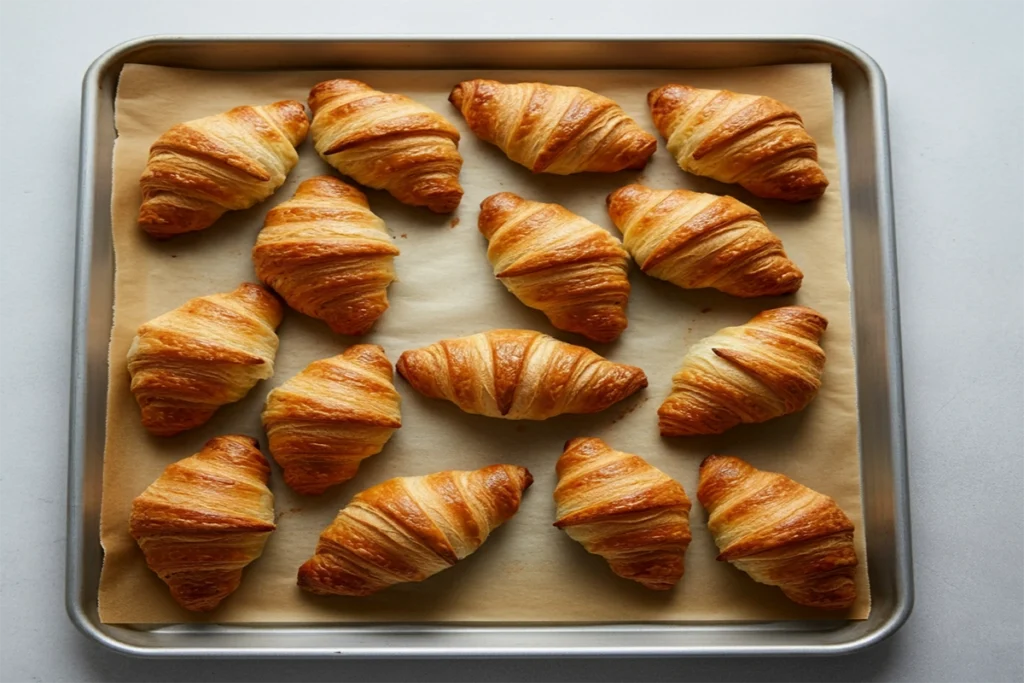
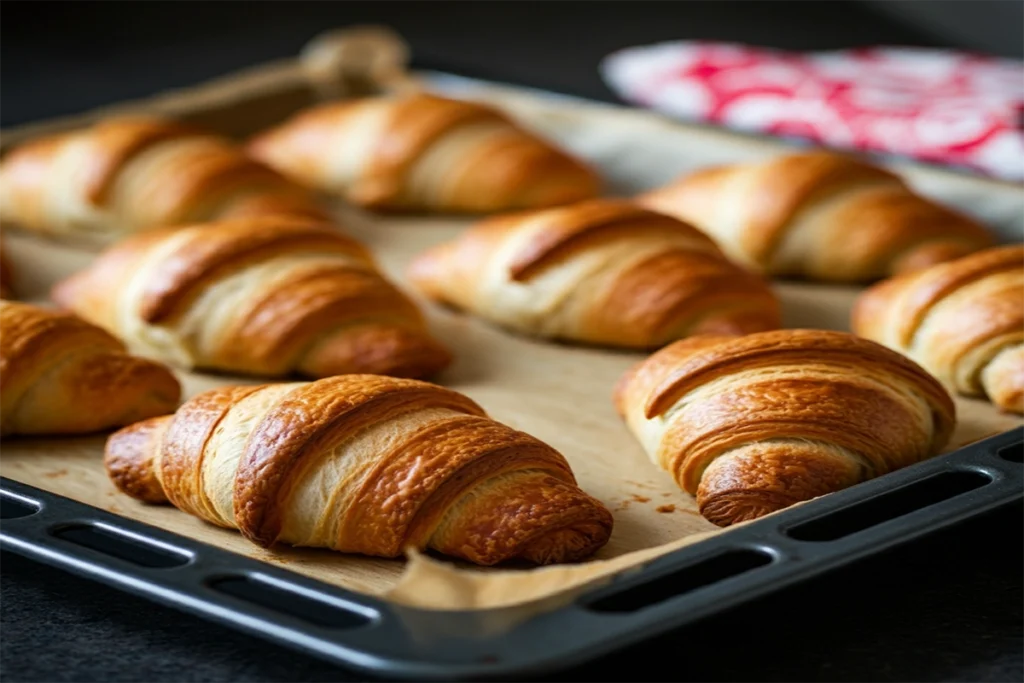
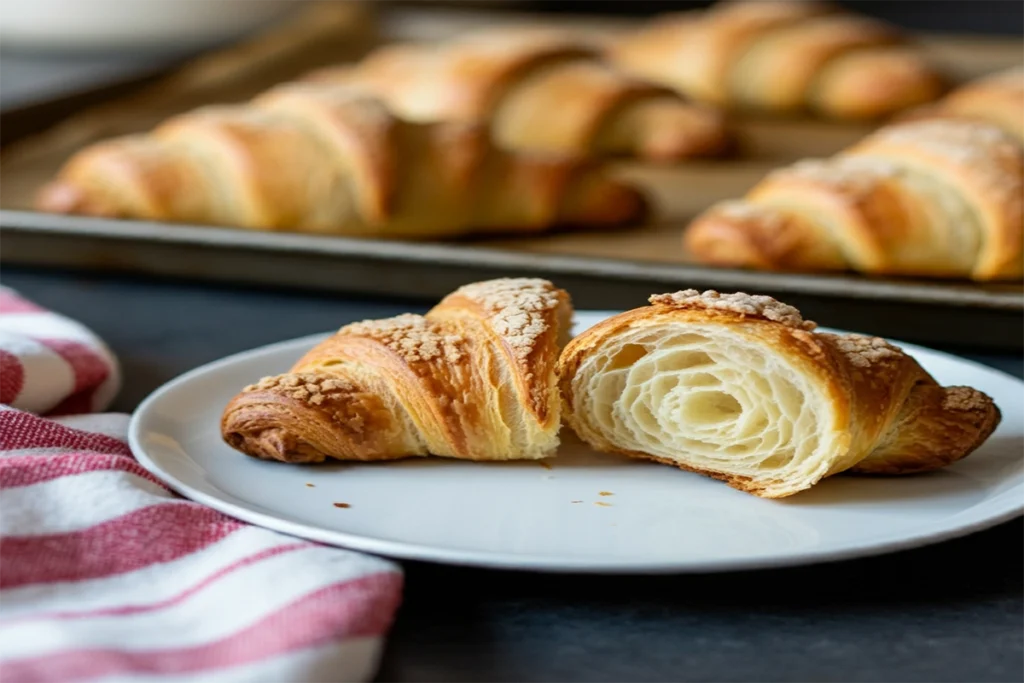
Nutritional Information for Gluten-Free Crescent Roll Breakfasts
Gluten-free crescent rolls can be part of a balanced breakfast, offering energy and nutrition without gluten. Here’s a look at the approximate nutrition for one crescent roll:
| Nutrient | Amount per Roll |
|---|---|
| Calories | 120 |
| Protein | 3g |
| Carbohydrates | 18g |
| Fat | 5g |
| Fiber | 1g |
Compared to traditional crescent rolls, gluten-free versions may vary slightly in protein and fiber depending on the flour blend used. Adding ingredients like eggs or cheese can boost protein for a more satisfying meal.

Expert Tips & Tricks
Achieving the perfect gluten-free crescent roll requires a few tricks to get that light, flaky texture.
First, keep your ingredients cold, especially the butter, as this creates steam pockets in the dough, resulting in flakiness.
Use a high-quality gluten-free flour blend that includes xanthan or guar gum for elasticity and structure.
When rolling the dough, work gently to avoid overhandling, which can make the rolls dense. And, if possible, let the dough chill briefly before baking to enhance the final texture.
Enjoy the process—it’s worth it!
Frequently Asked Questions (FAQ) About Gluten-Free Crescent Roll Breakfast Recipes
How do gluten-free crescent rolls compare to regular crescent rolls in texture? Gluten-free crescent rolls may be slightly denser than regular ones, but with the right flour blend and techniques, you can achieve a similar flaky texture.
What is the best gluten-free flour for crescent rolls? A combination of rice flour, potato starch, and tapioca flour is ideal for structure and lightness. Look for pre-mixed gluten-free all-purpose flours containing xanthan or guar gum for best results.
Can gluten-free crescent rolls be made vegan? Yes! Use dairy-free butter and almond or soy milk to make vegan-friendly gluten-free crescent rolls.
Do gluten-free crescent rolls rise the same way as regular ones? They may require extra leavening (like baking powder) since gluten-free dough doesn’t rise as easily as wheat-based dough.
Conclusion
Gluten-free crescent rolls can transform your breakfast routine, making it easy to enjoy comforting, nostalgic flavors without the gluten. From classic rolls to inventive breakfast sandwiches, you now have a versatile base for countless gluten-free breakfast ideas.
Give this recipe a try and make it your own! Whether you prefer classic rolls or stuffed variations, these gluten-free crescent rolls are sure to become a staple in your morning routine. Have fun experimenting with new fillings, and let us know in the comments which breakfast variation you loved the most. Enjoy!

